Indoor cat potty training can be achieved through consistent training. Patience, & The right tools. Start by providing a designated litter box in a quiet & accessible area. Use a litter that your cat prefers & keep The box clean at all times. Gradually transition your cat from their previous elimination spot To The litter box by moving their waste into it. Reward your cat with treats & praise when they use The litter box correctly. If accidents occur. Avoid scolding & simply clean up The mess. With time & consistency. Your cat will learn To use The litter box reliably.
Indoor cat potty training tips. Are you struggling with indoor cat potty training? Discover effective tips & tricks To make The process easier. From litter box placement To positive reinforcement. We’ve got you covered. Say goodbye To accidents & hello To a well-trained feline companion.
Indoor cat potty training tips
Understanding The Basics
Indoor cat potty training can be a challenging task. But with patience & consistency. It is definitely achievable. Before diving into The tips. It’s important To understand The basics of cat potty training. Cats are naturally clean animals & instinctively use litter boxes To relieve themselves. However. If your cat has never been exposed To a litter box or was previously an outdoor cat. They may need some guidance To adapt To an indoor potty routine.
Here you can find helpful insights from cat owners who have successfully trained their outdoor adult cats To use a litter box indoors.
Picking The Right Litter Box
The first step in indoor cat potty training is To choose The right litter box. Cats prefer large. Open litter boxes that are easy To access. Avoid covered litter boxes as they can make your cat feel confined & uncomfortable. It’s also important To consider The litter you use. Most cats prefer a clumping. Unscented litter. But you may need To experiment with different types To find what your cat prefers.
Placement & Accessibility
Where you place The litter box is crucial in helping your cat adapt To their new potty routine. Choose a quiet & secluded area of your home where your cat can have privacy. Avoid placing The litter box close To their food & water bowls as cats prefer To have separate areas for each activity. Additionally. Make sure The litter box is easily accessible. Especially for kittens or senior cats who may have difficulty climbing stairs.
Patience & Positive Reinforcement
When it comes To potty training. Patience is key. Cats learn at their own pace. So it’s important To be patient & understanding throughout The process. Whenever your cat uses The litter box. Offer praise & rewards. Such as treats or gentle petting. Positive reinforcement encourages your cat To associate The litter box with a positive experience. Making them more likely To use it consistently.
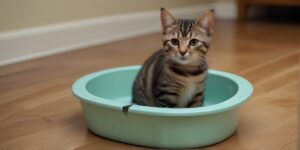
Dealing with Accidents
Accidents may happen during The potty training process. Especially in The beginning. It’s important To clean up accidents thoroughly using an enzymatic cleaner that eliminates odor. This helps prevent your cat from being attracted To The same spot again. Avoid using ammonia based cleaners. As they can resemble The scent of urine & may encourage your cat To continue eliminating in that area.
Consistency & Routine
Cats thrive on routine. So establishing a consistent potty routine is essential for successful potty training. Make sure To clean The litter box regularly. Ideally on a daily basis, & refill it with fresh litter. Stick To a regular feeding schedule as well. As cats often need To eliminate shortly after meals. By creating a consistent routine. You’ll help your cat understand when & where To go.
Seeking Professional Help
If you’re struggling with indoor cat potty training despite following these tips. It may be helpful To seek guidance from a professional. A veterinarian or a certified cat behaviorist can assess your cat’s specific needs & provide tailored advice To address any difficulties you may be facing. They can help determine if there are any underlying medical or behavioral issues that need To be addressed.
Key Takeaways:
- Choose a large. Open litter box that is easy for your cat To access.
- Place The litter box in a quiet & secluded area of your home.
- Be patient & provide positive reinforcement when your cat uses The litter box.
- Clean up accidents thoroughly with an enzymatic cleaner To prevent repeat accidents.
- Establish a consistent routine To help your cat understand when & where To go.
- If needed. Seek professional help from a veterinarian or cat behaviorist.
Remember. Indoor cat potty training requires time. Effort, & understanding. With The right approach & a little bit of patience. You can successfully train your indoor cat To use The litter box consistently. Stay positive & consistent, & soon your furry friend will be a pro at using their indoor potty area.
Potty Training Your Indoor Cat: Tips & Tricks
Training your indoor cat To use a litter box can be a challenge. However. With patience & consistency. You can successfully teach your furry friend where To go potty. In this article. We will explore some helpful tips & tricks for indoor cat potty training.
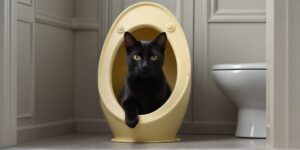
1. Choose The Right Litter Box
The first step in potty training your indoor cat is To provide them with The right litter box. Make sure it is large enough for your cat To comfortably move around in. Consider getting a covered litter box To give your cat privacy & reduce odor. Additionally. Choose litter that is soft & dust free To ensure your cat’s comfort.
For more information on choosing The right litter box. Check out this helpful resource.
2. Find The Right Location
The location of The litter box plays a crucial role in your cat’s potty training. Place it in a quiet & easily accessible area of your home. Avoid placing it near your cat’s food & water bowls. As cats prefer separate spaces for eating & elimination.
If you have a multilevel home. Make sure To have litter boxes on each floor To provide convenience for your cat.
3. Introduce Your Cat To The Litter Box
When introducing your cat To The litter box. Start by placing them in The box after meals or naps. Gently scratch The litter with their paws To show them how To dig & cover their waste. Repeat this process multiple times throughout The day To reinforce The behavior.
It’s important To note that forcing your cat into The litter box or punishing them for accidents can have negative effects on their potty training progress. Patience & positive reinforcement are key.
4. Maintain a Clean Litter Box
Cats are clean animals, & they prefer a clean litter box. Scoop The litter box daily & replace The litter every 12 weeks. This will ensure that your cat always has a clean & inviting space To do their business.
For more tips on litter box maintenance. Visit PetFoodopia.
5. Troubleshooting Common Issues
Some cats may face challenges during The potty training process. Here are a few common issues & their solutions:
Issue: Your cat is not using The litter box consistently.
Solution: Ensure you have enough litter boxes in your home. Provide positive reinforcement when your cat uses The litter box correctly, & consult your veterinarian To rule out any medical issues.
Issue: Your cat is eliminating outside The litter box.
Solution: Thoroughly clean The areas where your cat has eliminated. Use enzyme based cleaners To remove odors, & consider confining your cat To a smaller area with a litter box until they learn To use it consistently.

Comparison of Different Litter Options
| Litter Type | Pros | Cons |
|---|---|---|
| Clumping Litter | 👍 Easy To clean 👍 Controls odor 👍 Forms clumps for easy removal |
👎 Can be dusty 👎 Some cats may have allergies To certain types |
| Nonslumping Litter | 👍 Less dust than clumping litter 👍 Generally less expensive |
👎 May need To replace entire litter box more frequently 👎 Odor control not as effective |
| Recycled Paper Litter | 👍 Environmentally friendly 👍 Dust free 👍 Safe for cats |
👎 May not control odor as well as clumping litter 👎 More expensive than other options |
Remember. Each cat is unique. So it may take some trial & error To find The litter that works best for your furry friend. In conclusion. Indoor cat potty training requires patience. Consistency, & a few helpful tips. By providing The right litter box. Choosing The right location. Introducing your cat To The litter box gently, & maintaining cleanliness. You can successfully train your indoor cat. Remember. Accidents happen. So be patient & provide positive reinforcement throughout The process. Happy potty training!
My Personal Experience with Indoor Cat Potty Training
I recently adopted a rescue cat & had To go through The process of potty training her. It was initially challenging. But with consistent training & using The tips mentioned above. My cat eventually learned To use The litter box consistently. It took some time & patience. But seeing her successfully use The litter box was incredibly rewarding. Now. I can confidently say that she is fully potty trained!
FAQs
What is The best way To potty train an indoor cat?
The best way To potty train an indoor cat is To gradually introduce them To a litter box. Start by placing The litter box in a quiet & easily accessible area. Show The cat where The litter box is & gently place them in it after meals or naps. Be patient & consistent with The training. Rewarding The cat with treats & praise when they use The litter box correctly.
How can I encourage my indoor cat To use The litter box?
To encourage your indoor cat To use The litter box. Make sure it is clean & easily accessible. Scoop The litter box daily & replace The litter frequently To keep it fresh. Avoid using strong scented litter. As some cats may be sensitive To The odor. Additionally. Ensure The litter box is in a quiet & private area To provide your cat with a sense of security.
What should I do if my indoor cat refuses To use The litter box?
If your indoor cat refuses To use The litter box. There may be underlying reasons. Ensure The litter box is clean & properly positioned. If The issue persists. Consult a veterinarian To rule out any potential medical conditions. Additionally. Consider providing multiple litter boxes in different areas of your home To give your cat more options.
Can I use a different type of litter for my indoor cat?
Yes. You can use different types of litter for your indoor cat. Cats have individual preferences when it comes To litter. So you may need To try different options To find The one your cat prefers. Some cats prefer clumping litter. While others may prefer nonslumping litter or environmentally friendly alternatives such as recycled paper or wood pellets. Experiment & observe your cat’s behavior To determine The best litter choice.
How can I discourage my indoor cat from urinating outside The litter box?
To discourage your indoor cat from urinating outside The litter box. Thoroughly clean any accidents using an enzyme based cleaner To eliminate The scent. Restrict access To The areas where accidents have occurred by closing doors or using baby gates. Additionally. Consider placing a litter box in The affected area To encourage proper use. If The behavior continues. Consult a veterinarian To rule out any underlying medical issues.
Should I consider using litter box liners for my indoor cat?
Using litter box liners is a personal preference. Some cats may not mind The liners. While others may find them uncomfortable or easily tear them. If using liners. Ensure they are securely fastened To prevent any accidents. Regularly check The liners for any signs of damage & replace them as needed. If your cat shows any aversion To The liners. It’s best To remove them & use The litter box without liners.

Conclusion
In conclusion, indoor cat potty training can be a challenging but rewarding process for both you & your furry friend. By following these simple tips, you can create a comfortable & clean environment for your cat To do their business indoors. First & foremost, it’s important To choose The right litter box for your cat. Make sure it’s large enough for them To comfortably move around in & that it’s placed in a quiet & easily accessible location. Additionally, consider using a litter that your cat prefers, as this can greatly increase The chances of successful potty training. Consistency is key when it comes To training your indoor cat. Establish a daily routine for feeding, playtime, & potty breaks. By keeping a consistent schedule, your cat will learn when it’s time To use The litter box & this will minimize accidents outside of it. When accidents do happen, it’s crucial To remain patient & avoid punishing your cat. Negative reinforcement can lead To stress & anxiety, making The training process even more difficult. Instead, try using positive reinforcement techniques such as treats, praise, & gentle encouragement To reward your cat for using The litter box correctly. Monitoring your cat’s behavior & using appropriate cleaning products are also essential aspects of indoor cat potty training. Keep an eye out for signs of discomfort or irregular bathroom habits, as these might indicate a health problem that needs To be addressed by a veterinarian. Lastly, always remember that every cat is unique & may require a slightly different approach To potty training. Some cats may take longer To adjust To using a litter box indoors, while others may catch on quickly. By being patient, consistent, & understanding, you can help your indoor cat become a pro at using The litter box. In conclusion, indoor cat potty training is a process that requires time & effort, but with The right approach & these helpful tips, you can successfully train your cat To use The litter box indoors. So, embrace The challenge & enjoy The rewards of a clean & happy home with your loving indoor cat.




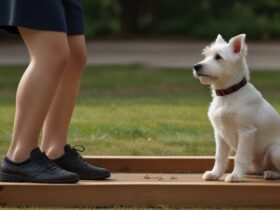
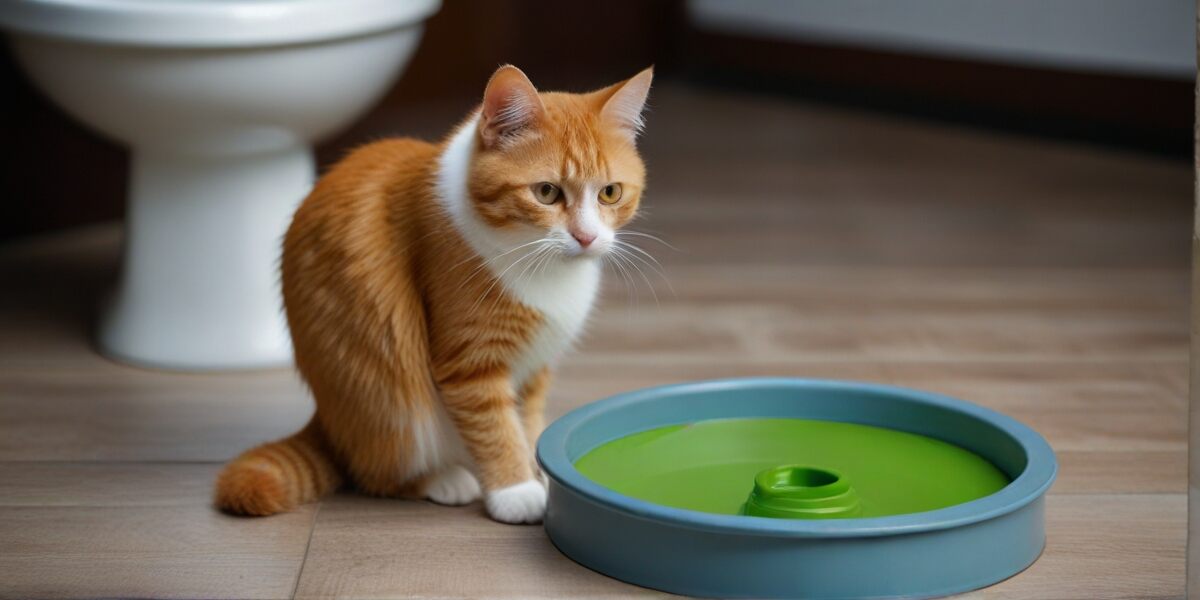
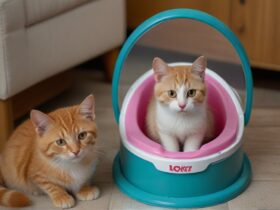

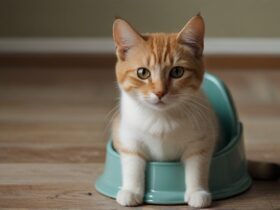
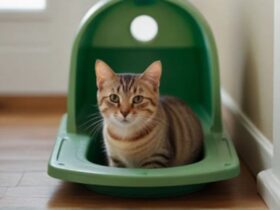
Leave a Review